By Evelyn and Davin
Last night, just as we were getting ready for bed, it started raining. It continued throughout the night and into the morning. Our tents kept us dry, except for poor Peiwen and Lily, who had their windows open when the rain started!
Despite the rain, we had an early breakfast and loaded into the Bunduz bus to go to Mount Longonot National Park, about an hour’s drive away. Mount Longonot is a volcanic mountain. The current crater is believed to have formed some 21,000 years ago, but there is some evidence of activity in the 1860’s. There is scrubby forest all the way up, with the low-statured acacia and heather trees becoming shorter near the top, making it almost an elfin forest!
The hike up the mountain was strenuous, and the cool damp conditions were welcome in comparison to our hot hike to the waterfall earlier in the week. The trail was very eroded in places, where runoff had carved deep gorges into the soft dirt path. The hike is 3.1 km to the top of the volcano’s crater, with an elevation gain of 414 meters. That’s the equivalent to climbing 2070 stairs! Depending on how big you consider a flight of stairs to be, that is ~130 flights of stairs!
On the way up we saw Grant’s gazelles, zebras and several interesting species of bird, including brimstone canaries, red winged starlings, speckled pigeons, and yellow crowned canaries. We came across the most exciting find just after the halfway point: a side-striped chameleon! It was cleverly camouflaged on an Acacia tree on the side of the trail and was nearly black in colour to match the nodules it was sitting on. As we watched, it slowly moved onto a branch, and turned colour to greenish brown with stripes. It snapped out its tongue to catch a small fly. It was really exciting to have spotted such a unique creature in the wild.
As we continued to the summit, walkways became increasingly narrow, making the climb even more daunting for those of us who have a fear of heights. The climax was a small goat path about 3 metres long falling sharply on the left and into a water carved channel on the right. Once we overcame the tenuous part of the hike it was a short jaunt to the top.
At the summit we were elated to have a rest and contemplate our accomplishment, as some of us rehydrated with drinks and reenergized with bars or other snacks. There were some bird species flying by, for example the red-winged starling, although much of our focus became the scenic view. Initially we were somewhat diminished by the heavy clouds occluding the crater, and although we never got a clear view of the crater, the clouds did eventually part so we could see some of the forest which now inhabits the caldera of the volcano. After some selfies, panos, and a group photo, we began our descent down the mountain.
On the way down we revisited sights of flora and fauna, including a species of spider, beetle and buzzing cicada. We also added to our list of avian species, encountering a white fronted bee-eater and ashy flycatchers. There were several flowering plants that seemed to coincide with the particular elevations we spanned, however we couldn’t help but be taken by the sight of giraffes in the valley across the rift. There were several of them, grazing on acacia leaves, sitting down for a rest and some just meandering through the valley as giraffes do. Luckily with some decent zoom lenses, we were able to capture images of these beauties also.
Finally reaching the base, we returned to our awaiting bus and headed back to Camp Carnelley’s where Bunduz had a wonderful lunch ready. Following this we had down time to clean up, update field books, and have a debriefing before dinner, before the eventual comfort of our sleeping bags.
Click on the thumbs to see larger versions
- Sitting giraffe
- Longonot giraffes crossing necks
- Beetle on the path to the summit
- Arachnid on the way to the summit
- Group shot at the rim of the crater
- Flower as yet unidentified
- White-fronted bee eater
- Brimstone canary
- Side-striped chameleon aster it has started to lighten
- Red-winged starling
- Ashy flycatchers
- Mushrooms on dung
- Panorama at Longmont crater rim
- Chameleon before colour change

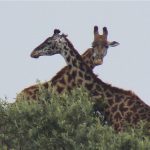
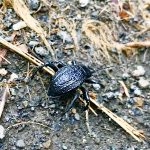

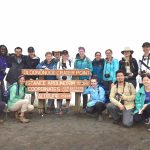

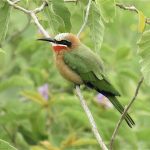


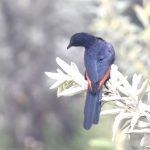

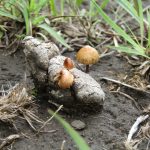

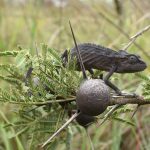
Leave a Reply